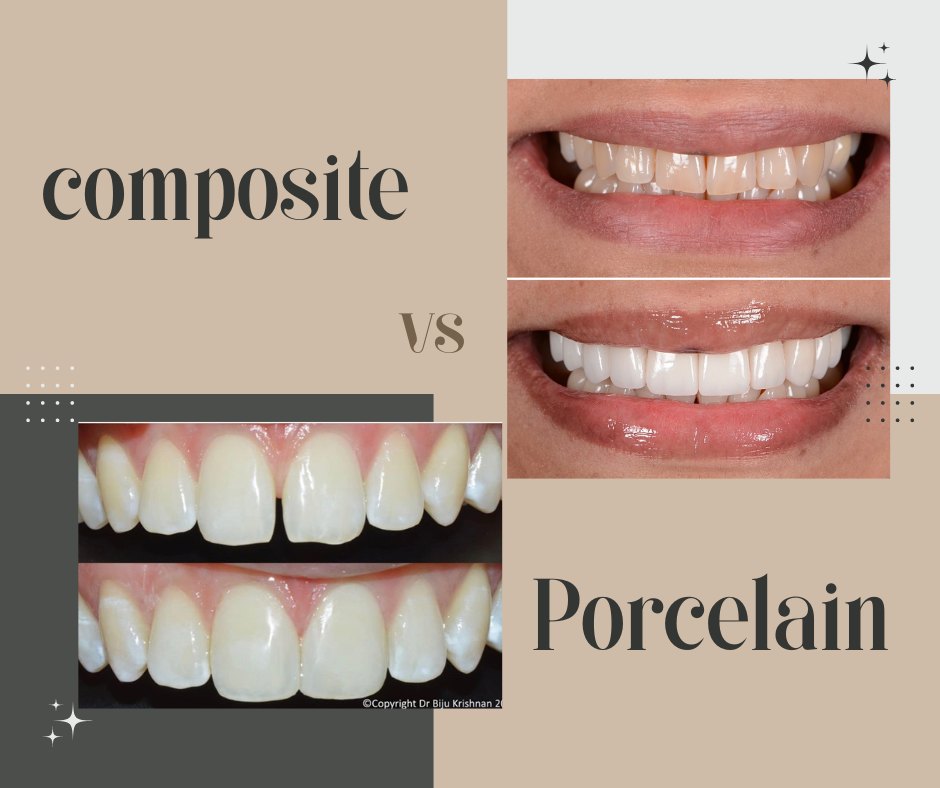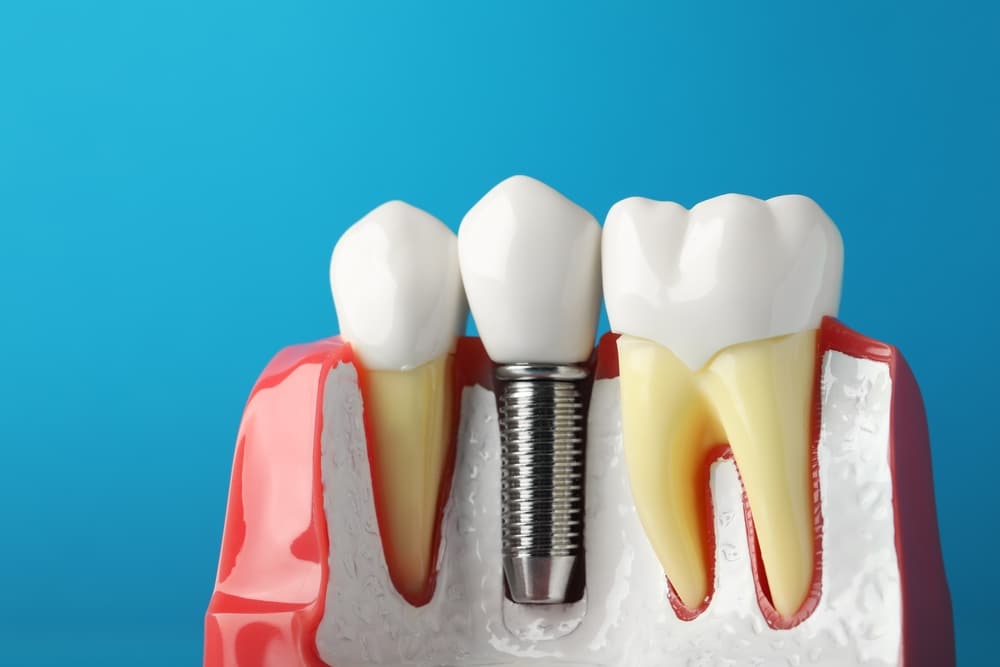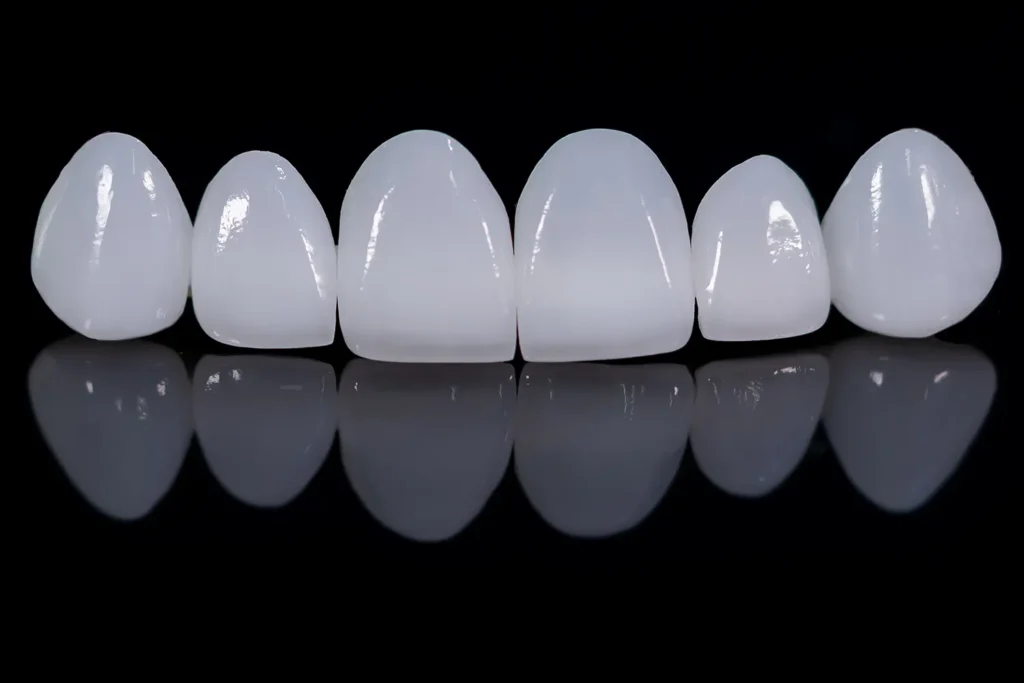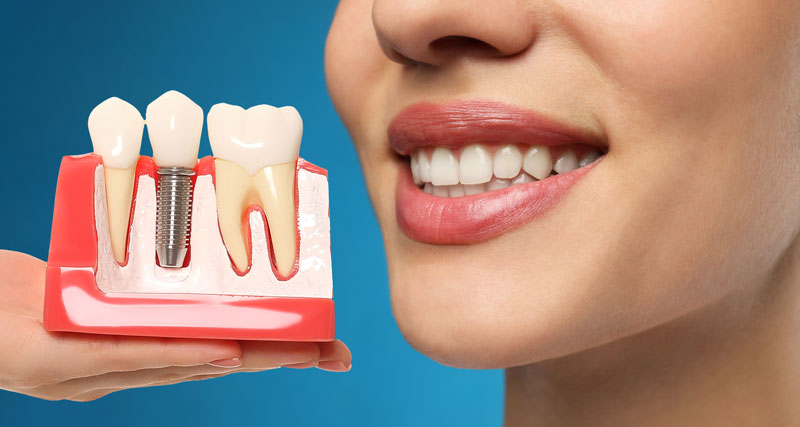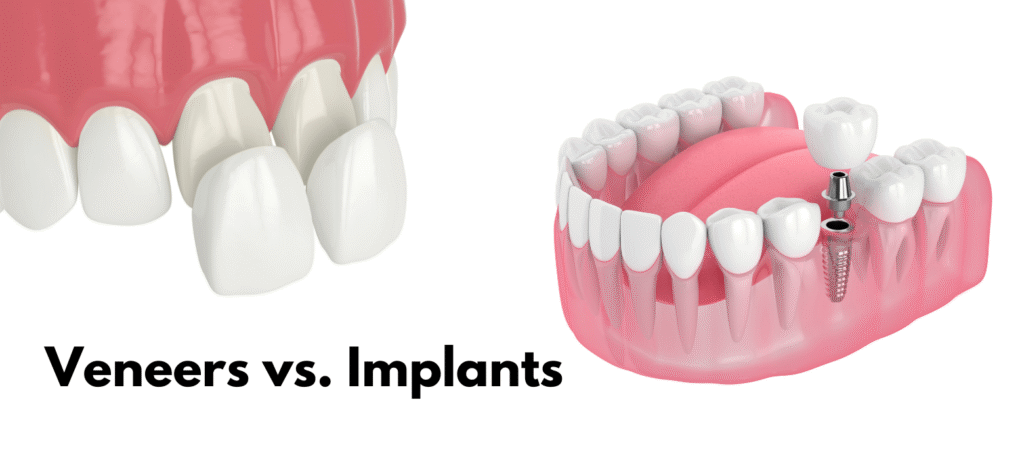
The Veneers vs. Implants comparison in modern dentistry highlights their distinct purposes—implants provide a permanent tooth replacement solution by integrating with the jawbone. At the same time, veneers offer minimally invasive aesthetic enhancements for front teeth, with each option catering to different patient needs, ranging from functional restoration to cosmetic smile transformations.
The choice between these treatments depends on various factors like dental health status, individual needs, and patient expectations. When considering Dental Implants vs Veneers, it’s important to understand their distinct characteristics. This article provides a detailed comparison of both methods, examining their advantages, disadvantages, key differences, as well as costs and longevity. With this knowledge, you can make a more informed decision about your dental health and smile aesthetics.
Whether you’re looking to restore missing teeth or transform your smile, this comprehensive comparison between dental implants and veneers will help you choose the best option for your unique situation. Join us as we explore each method in detail.
What Are Dental Implants?
Dental implants are titanium posts that serve as artificial roots implanted into the jawbone, providing a foundation for crowns, bridges, or dentures. This method restores chewing function (80-90% of natural teeth) and prevents bone loss, making it the gold standard for tooth replacement. At D’Amico Dental Care, serving Watertown and Wayland, the process involves an initial CT scan evaluation, surgical placement of the fixture, a 3-6 month bone healing period (osseointegration), and final crown attachment. Success depends on factors like bone density, surgeon skill, and post-op care.
While implants offer remarkable benefits, they may have potential complications like infection (peri-implantitis) or failure in smokers and uncontrolled diabetics. When considering Dental Implants vs Veneers, it’s important to note that implants can last 15-25 years under ideal conditions. However, proper oral hygiene and regular dental check-ups are crucial for longevity.
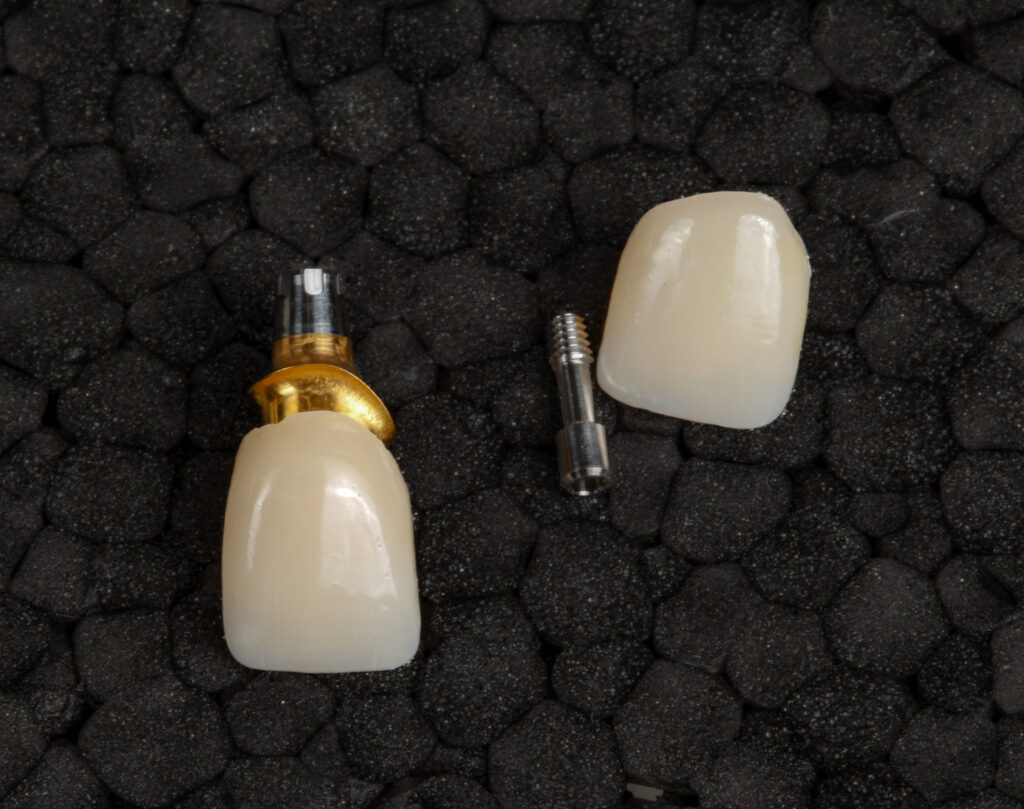
Pros and Cons of Dental Implants
While dental implants come with higher costs and a longer treatment process, they remain the gold standard for replacing missing teeth. This method offers significant advantages compared to other treatments, though its success depends on various factors, including the dentist’s expertise, jawbone quality, and post-operative care.
Advantages of Dental Implants:
• Restores full chewing function just like natural teeth
• Prevents long-term jawbone deterioration
• Exceptional durability (typically over 20 years with proper care)
• Preserves adjacent teeth without needing to alter them
• Completely natural appearance, matching your teeth
• More comfortable than removable dentures
Disadvantages of Dental Implants:
• Higher initial cost compared to other tooth replacement options
• Requires surgery with several months of healing
• Complete treatment takes considerable time (3-9 months)
• Requires specific oral and overall health conditions for candidacy
• Potential complications like infection or failed osseointegration
• Demands meticulous oral hygiene maintenance after placement
When evaluating Dental Implants vs Veneers, it’s important to note that while veneers primarily address cosmetic concerns, implants provide both functional and aesthetic solutions for missing teeth.

What Are Veneers?
Veneers are thin, custom-made shells of composite or ceramic material that bond to the front surface of teeth to correct cosmetic issues like discolouration, chips, or misalignment. This treatment is more conservative than extensive restorative methods like full crowns.
“Partial laminate veneers, defined as small ceramic restorations adhesively luted onto unprepared anterior teeth, are an interesting and conservative alternative to conventional ceramic and composite resin veneers in the anterior region.”
Types of Veneers: Porcelain veneers are highly durable, lasting 10-15 years, and offer a more natural appearance while requiring minimal enamel removal. On the other hand, composite veneers are more affordable, can be completed in a single visit, but have a shorter lifespan of 5-7 years.
When considering Dental Implants vs Veneers, it’s essential to understand that veneers are primarily used for:
- Correcting teeth stains resistant to whitening
• Closing gaps between teeth (diastema)
• Repairing chipped or asymmetrical teeth
Pros and Cons of Veneers
In the Veneers vs. Implants comparison, veneers serve as a cosmetic solution rather than a restorative one, with selection depending on budget and aesthetic expectations alongside professional recommendations, while their lifespan relies on meticulous oral hygiene and avoiding hard foods to prevent damage to these fragile porcelain enhancements.
Advantages of Veneers:
• Dramatic smile improvement in minimal time
• Corrects multiple issues simultaneously (color, shape, alignment)
• Good stain resistance (especially porcelain veneers)
• Less tooth reduction than full crowns
• Natural-looking, uniform smile
• Great alternative for non-orthodontic candidates
Disadvantages of Veneers:
• Relatively high cost (especially porcelain)
• Irreversible process (due to enamel removal)
• Potential chipping from impact/hard foods
• Temporary tooth sensitivity after placement
• Need replacement every 5-15 years, depending on type
• Possible colour mismatch with natural teeth over time
When considering Dental Implants vs Veneers, remember that veneers enhance existing teeth while implants replace missing teeth entirely. Both require careful maintenance for long-term success.
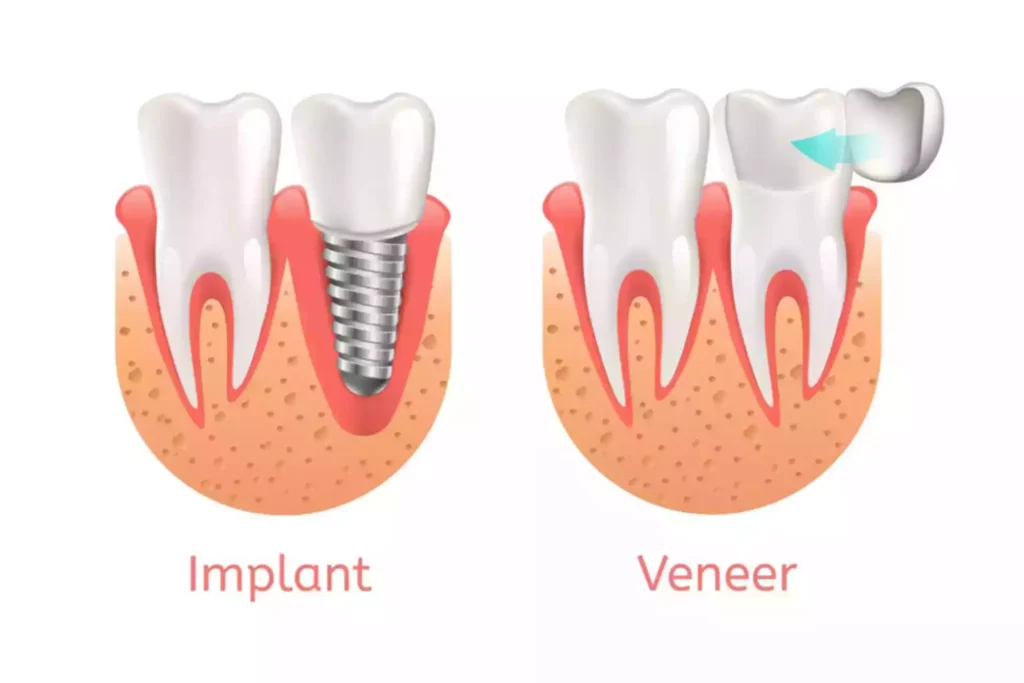
Key Differences Between Dental Implants and Veneers
Implants and veneers are two completely different dental procedures with distinct purposes and applications:
- Treatment Purpose:
• Implants: Replacing missing teeth (functional)
• Veneers: Enhancing existing teeth (cosmetic) - Procedure:
• Implants: Require surgical placement in the jawbone
• Veneers: Surface application without surgery - Structural Changes:
• Implants: No alteration of adjacent teeth
• Veneers: Minimal enamel removal (0.3-0.7mm) - Longevity:
• Implants: 15-25 years with proper care
• Veneers: 5-15 years, depending on the material - Cost:
• Implants: Higher due to the complex process
• Veneers: More affordable, but require earlier replacement - Candidacy:
• Implants: Require adequate bone density
• Veneers: Need healthy underlying teeth
When weighing Dental Implants vs Veneers, remember implants offer permanent tooth replacement while veneers provide aesthetic improvement for existing teeth. The choice depends entirely on your dental needs and oral condition.
| Criteria | Dental Implants | Veneers | Clinical Implications |
| Primary Purpose | Tooth replacement (functional restoration) | Aesthetic enhancement (cosmetic improvement) | Implants restore chewing function; veneers improve smile appearance |
| Procedure | Surgical (titanium post inserted into jawbone) | Non-surgical (bonded to the tooth surface) | Implants require osseointegration (3-6 months) |
| Tooth Preparation | None (preserves adjacent teeth) | 0.3–0.7mm enamel removal (irreversible) | Veneers alter natural tooth structure |
| Longevity | 15–25+ years (95% 10-year success rate) | 5–15 years (porcelain lasts longer) | Implants are a long-term investment |
| Ideal Candidates | • Missing teeth • Adequate bone density |
• Discolored/crooked teeth • Healthy enamel |
Implants require bone grafts if the volume is insufficient |
| Maintenance | Brush/floss like natural teeth | Avoid staining foods/hard objects | Veneers need polishing to maintain their shine |
| Failure Risks | Peri-implantitis (infection), osseointegration failure | Debonding, chipping, and staining |
Cost Comparison: Dental Implants vs Veneers
Dental implants generally cost more than veneers since they involve complex surgery with advanced materials. The final implant price depends on multiple factors like bone grafting needs, number of units required, and the surgeon’s expertise. Additional costs, such as specialised imaging and initial evaluations, also contribute to the total price. However, implants’ longer lifespan and functional benefits make this investment worthwhile over time.
When comparing Dental Implants vs Veneers, it’s helpful to know veneers come in two main types (composite and porcelain) with different price ranges. Porcelain veneers offer higher quality and durability, while composite veneers are more budget-friendly. Final veneer costs depend on the number of teeth treated, the materials used, and the dentist’s skill. Though veneers have lower upfront costs, their need for earlier replacement makes their long-term expenses significant.
Durability and Longevity: Which Lasts Longer?
Dental implants are the superior choice when it comes to longevity. With proper care, an implant can last 20 to 30 years or even a lifetime. This exceptional durability comes from osseointegration – the process where the implant permanently fuses with your jawbone. Studies show implants have over a 95% success rate after 10 years.
Dental veneers have a shorter lifespan. High-quality porcelain veneers typically last 10-15 years, while composite veneers usually endure 5-7 years. Various factors affect veneer longevity, including oral hygiene, eating habits (like chewing ice or nails), and your dentist’s skill. Unlike implants, veneers require periodic replacement.
When considering Dental Implants vs Veneers, here’s the bottom line: While implants cost more initially, they’re a better long-term investment in terms of durability. Veneers serve more as a medium-term cosmetic solution rather than a permanent restorative treatment. Your choice ultimately depends on your dental needs and personal expectations.
| Aspect | Dental Implants | Dental Veneers | Clinical Significance |
| Average Lifespan | 20-30+ years (often lifetime) | Porcelain: 10-15 years Composite: 5-7 years |
Implants outperform by 2-4x longevity. |
| 10-Year Success Rate | 95-98% (JOMI 2023 meta-analysis) | Porcelain: 85-90% Composite: 60-70% |
Implants show superior predictability. |
| Failure Modes | Peri-implantitis (8-12% at 15 years) | Debonding (15-20%) Staining/Fractures |
Veneer failures are more frequent. |
| Biological Basis | Osseointegration (bone fusion) | Adhesive bonding to enamel | Implants biologically anchor to the jaw |
| Replacement Needs | Rare (<5% at 20 years) | Porcelain: 1-2x per lifetime Composite: 3-4x |
Implants avoid recurring costs. |
| Key Decay Factors | Smoking Periodontal disease |
Bruxism Abrasive hygiene |
Veneers are more vulnerable to mechanical wear. |
Aesthetic Results: Implants vs Veneers
In the Veneers vs. Implants debate, dental implants achieve exceptionally natural aesthetics when placed by skilled specialists, as modern zirconia/titanium implants with ceramic coatings—precisely positioned to harmonise with facial structure and smile lines while colour-matched to adjacent teeth—deliver results virtually indistinguishable from natural dentition, though requiring more invasive placement than veneers.
Dental veneers are designed explicitly for cosmetic enhancement. At D’Amico Dental Care, serving Watertown and Wayland, we use porcelain veneers (laminates) with natural enamel-like light transparency and reflection to deliver the most lifelike aesthetic results. Their main advantage is the ability to simultaneously correct tooth colour, shape, size, and position, completely transforming smiles without extensive procedures.
When evaluating Dental Implants vs Veneers, the key difference is:
• Implants primarily replace missing teeth with natural-looking results
• Veneers better serve smile makeovers and ideal appearance creation
• Veneers offer greater flexibility in cosmetic design
| Aspect | Dental Implants | Porcelain Veneers | Clinical Advantage |
| Primary Aesthetic Role | Functional tooth replacement with natural appearance | Comprehensive smile transformation | Veneers allow full smile design control |
| Material Options | • Titanium + ceramic crown • Full-zirconia |
Feldspathic/Lithium disilicate porcelain | Veneers offer superior light refraction |
| Color Matching | Shade-matched to adjacent teeth (VITA scale) | Full-arch shade uniformity is possible | Veneers correct multiple discolored teeth |
| Gum Integration | Requires a perfect emergence profile | No gum-line challenges | Veneers work with the existing gum contour |
| Shape Customization | Limited to natural tooth anatomy | Complete shape/size redesign | Veneers can close gaps/lengthen teeth |
| Position Control | Fixed by bone anatomy | Can mask minor misalignments | Veneers create instant ortho-like results |
| Best For | • Single missing teeth • Full-arch cases needing function |
• Smile makeovers • Intact but unesthetic teeth |
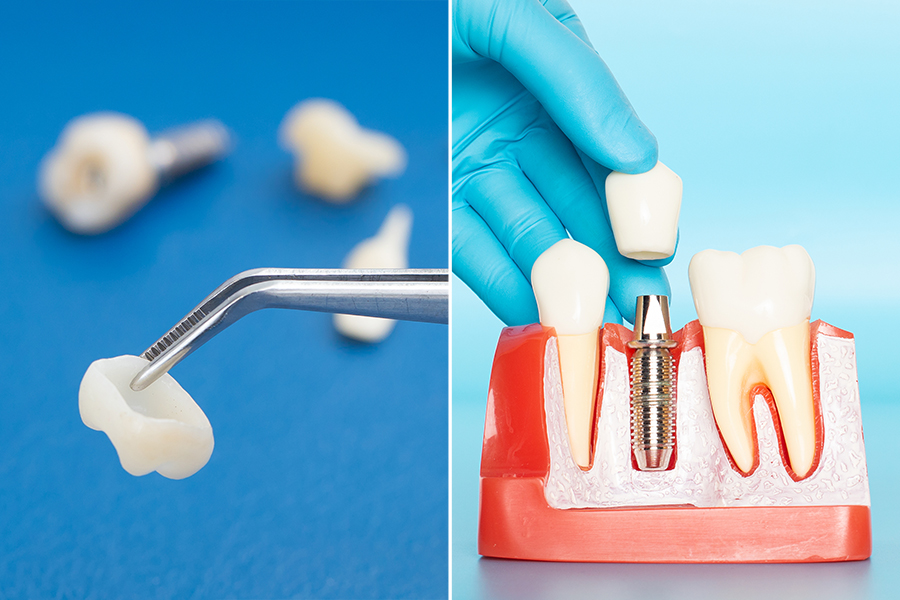
Which Option Is Right for You?
If you have missing teeth, Implants are your best choice. They don’t just replace teeth – they prevent jawbone loss and restore natural chewing function. Implants are ideal for people missing one or several teeth who want a permanent solution.
Looking to enhance your smile’s appearance? Veneers are a better option. Designed to improve the colour, shape, size, or alignment of front teeth that are healthy but unattractive, veneers can fix issues like chips, gaps, or bleaching-resistant stains.
Key deciding factors:
• Current dental condition (healthy vs. missing teeth)
• Overall health and jawbone status
• Available budget and treatment time
• Your expectations for results
When considering Dental Implants vs Veneers, professional consultation is essential. Sometimes, combining both – implants for missing teeth and veneers for natural ones – creates optimal results.
FAQ
- What Are the Structural Differences Between Implants and Veneers?
A dental implant is a titanium post that serves as an artificial root embedded in the jawbone, with a dental crown mounted on top, used to replace missing teeth. In contrast, a veneer is a thin ceramic layer bonded to the surface of natural teeth to enhance their appearance, designed for existing teeth.
- What Issues Does Each Method Address?
Implants primarily replace missing teeth, restoring both function and aesthetics. Veneers solely improve the appearance of existing teeth, correcting issues like severe discolouration, minor cracks, gaps between teeth, or irregular tooth shapes.
- What Are the Procedures for Each?
Implant treatment involves surgical placement of titanium posts, a 3-6 month healing period, and crown installation, typically requiring multiple dental visits. Veneers are less invasive, usually completed in 2-3 sessions involving tooth preparation, impression-taking, and custom veneer bonding.
- How Long Do Implants and Veneers Last?
With proper care:
- Implants: Can last a lifetime (though crowns may need replacement every 10-15 years)
- Veneers: Typically last 10-15 years before potential replacement
- What’s the Price Difference?
- Implants are significantly more expensive due to surgical components and materials (costing multiples of a single veneer)
- Veneers are primarily cosmetic treatments
Note: Implants offer permanent tooth replacement, while veneers are aesthetic enhancements
- Maintenance Requirements for Each:
- Implants: Require natural tooth-like care (daily brushing/flossing + regular checkups)
- Veneers: Need meticulous oral hygiene + avoidance of hard foods to prevent damage
Both: Smoking cessation is recommended
- How to Decide Between Them?
- Choose implants if you’ve lost teeth
- Consider veneers for healthy teeth with aesthetic concerns
The final decision should follow a dental consultation based on individual oral conditions.
- Which Delivers Better Cosmetic Outcomes?
Both provide excellent but different results:
- Implants: Fully replace teeth (restoring function + aesthetics)
- Veneers: Enhance existing teeth (uniform colour/shape correction)

